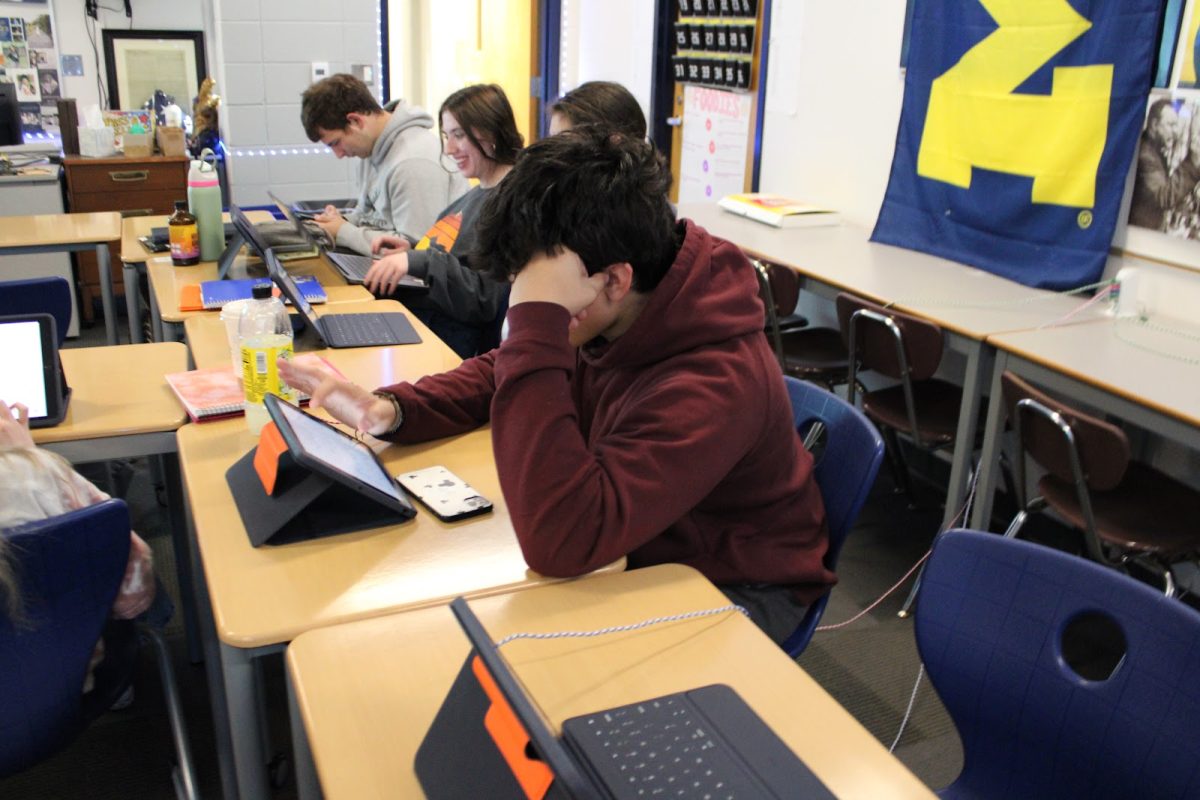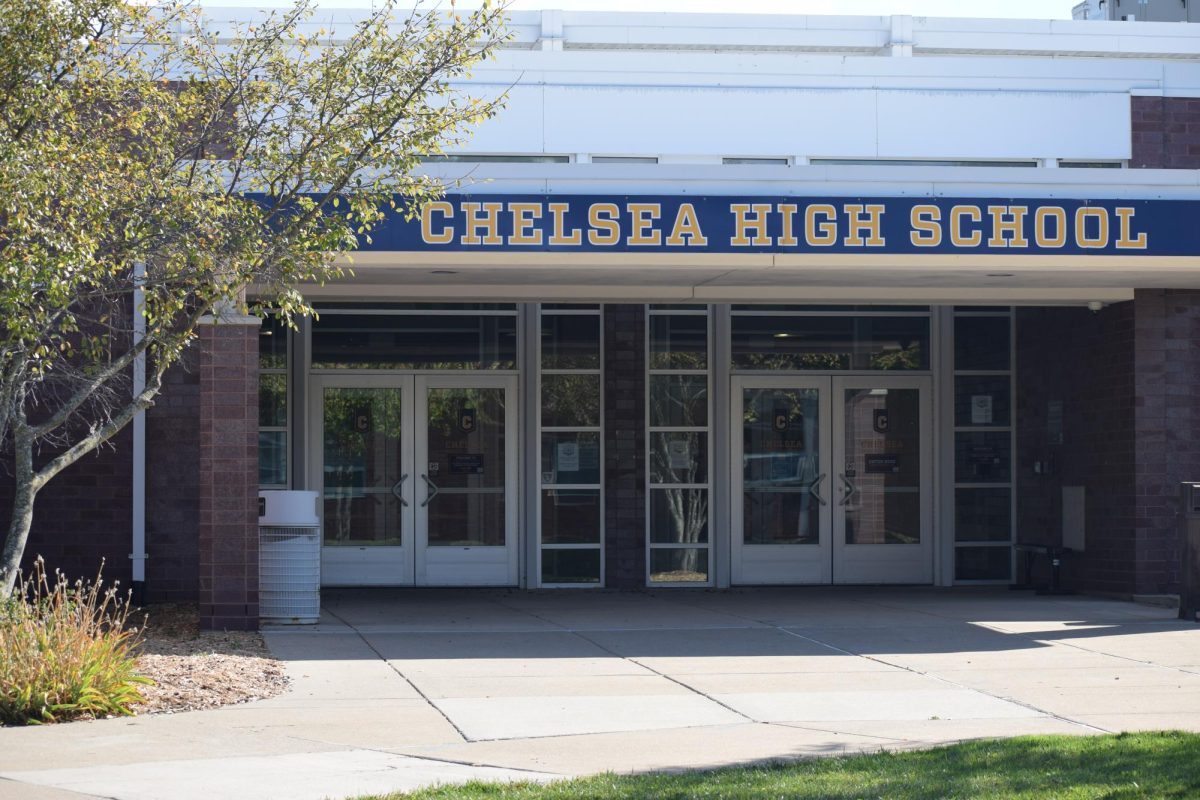Different schools approach exam days differently, and here at Chelsea High School, there are two full days for exams this year. Some teachers do projects, while others do written tests. On the first day, CHS will have all five classes with two exams; however, on the second day, we will have three different exams back-to-back. This can impact the amount of time students get for each exam, making it unfair for those who have less time to take their exam than others.
“I try to prepare for 90, and if someone needs to go 120, then they can have that extra time,” math teacher Karen Kurcz said. “They don’t have the pressure of, okay, I gotta get out of here for my next exam. I would say that over the years, I have developed a 90-minute rule and then allowed kids to take longer if they wanted.”
Having two full days can give some students extra study time, but not others, depending on their schedule. Students who have exams during the 2nd and 4th hours can have extra time to study during the hours in between those exams for their exams the next day (Tuesday). This means they have more time to prepare than students who might have those exams during the 2nd or 4th hour and have to take them on Monday. Students study a lot at home, causing a lack of sleep and more stress.
“I think I’d prefer semesters; I mean, trimesters give students more options for electives,” Spanish teacher Rachel English said. “But I think as a Spanish teacher who’s only ever taught semesters, losing six weeks kind of makes me pull out more of the fun stuff to kind of focus on the academic side, which is good, but I like to bring some fun.”
Some people would prefer a semester schedule instead of trimesters because of the greater opportunity for classroom fun that it brings. Trimesters do give students lots of opportunities to take more classes, but they can take away from teachers and what they can do with their students. Trimesters are 12 weeks, compared to semesters, which have 18 weeks. A 6-week time slot is a huge difference. This is especially true if you want to have more fun activities incorporated into your learning.
“That’s actually the reason that I made the project geometry course,” Kurcz said. “Because all the stuff we do in Project Geometry should be projects that we’re able to do in regular geometry, if we had the extended time for the whole other trimester, we could be enjoying the geometry class.”
However, there are different perspectives to consider. Having a full day with three exams could help teachers but be unrealistic for students, especially given the overwhelming nature of having three exams back-to-back.
“I like having the full day before Thanksgiving, which I think is why they moved [the exam schedule] to two full days,” science teacher Molly Mattias said. “So having a full day off is really nice because then I have that flexibility where I can do a little personal stuff [or] a little preparation for the next semester. I think it’s not ideal for students at all.”
Some schools do their exams in 3-day blocks, making it easier on students and taking away the workload for one day. On the first day, students would have lots of time to study, and then one of their exams. The following two days would contain the rest of their exams.
“I know that a while ago, when I was teaching in my earlier years here, we had three half days,” Mattias said. “So we [would] have exams 1 and 2 [on the first day], 3 and 4 [on the second], then 5 and 6 [on the third].”
This was when Chelsea was on the semester schedule (instead of trimesters) with six classes in a day. With the current trimester schedule and uneven number of classes, it’s hard to break exams up into three half-day blocks.
“When we switched to trimesters, this is when we saw this: how do we give these half days that don’t really fit anymore?” Mattias said.
But there are alternatives to this three-and-a-half-day system that would still break up the workload and reduce stress on kids.
“So I don’t know what the reality is for the students; I only know what my reality is,” Mattias said. “I think reducing the stress for you guys is the important part.”
There are many things that go into exams that people don’t take into account. It is unfair to have different time slots for exams, giving other students an unfair advantage. With three different days for exams, we can not only have equal times for each exam but also cut in extra study time for the first full day. With that, students can go to clarify with their teachers before exams and ask any last questions without feeling rushed on exam day.
“I’m probably going to have five exams,” senior Mitchell Brown said. “I don’t know how much other people study, but I actually do study, and I think studying is really beneficial.”
Of course, there are many different alternatives to having exam days split up. Three exams in one day can be very stressful for many students with a larger workload. Students who have lots of APs or courses can get overwhelmed with the number of exams in one day. By splitting it up, we can reduce stress, let students have a fair amount of time for each, and give students better study options.
“Maybe an idea is that you could split off half of the day and have a half day of classes so you can actually go to class, and then the rest of the day has a bulldog block to just study for an hour and have an exam in the fifth hour,” Brown said. “Things like having real school for one hour and being able to study for an exam, I think that would be okay because then you have built-in time to study right before you go and take it, which I think would be beneficial.”













